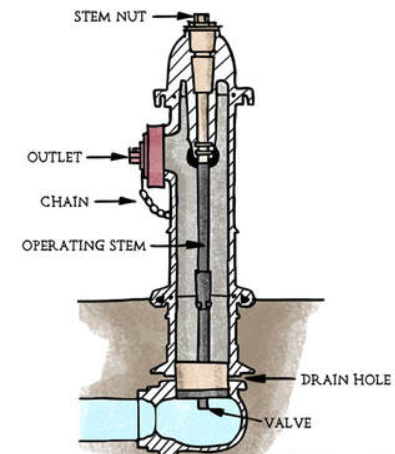Introduction
In modern fire protection systems, hydrant flanges play a crucial role. They connect hydrant valves, pipelines, and fittings securely. A hydrant flange ensures a tight seal that prevents leakages during high water pressure emergencies. Choosing the right flange improves safety and operational efficiency.
At Fortis Forge, we specialize in manufacturing durable hydrant flanges for industrial and municipal applications. Our products comply with global standards and deliver reliable performance.
What is a Hydrant Flange?
A hydrant flange is a flat, circular metal plate with holes around its perimeter. It connects a hydrant system to a pipeline or valve. The bolts secure it tightly to ensure leak-free operation.
They are generally made from galvanized iron, carbon steel, stainless steel, or ductile iron. Each material offers unique advantages based on environment, pressure, and cost.
Types
It is vary based on pressure ratings, material composition, and application. Below are the most common types:
1. Weld Neck Flange
This flange is welded directly to the pipe. It offers excellent strength under high pressure.
2. Slip-On Flange
Easy to install, this type slips over the pipe and is then welded in place.
3. Blind Flange
Used to close or block a pipeline, blind flanges ensure complete shut-off.
4. Threaded Flange
Threaded connections make installation simple, without welding.
5. Lap Joint Flange
Used with stub ends, lap joint flanges provide flexibility in alignment.
Importance
They are not just pipeline accessories. They are vital safety components in fire suppression systems.
They allow quick connection between hydrants and pipelines.
They withstand sudden surges of water pressure during emergencies.
They prevent leakage that can weaken fire-fighting efficiency.
They support reliable maintenance and inspection of systems.
Materials Used in Hydrant Flanges
Material choice impacts durability and performance.
Galvanized Iron (GI): Affordable and rust-resistant.
Carbon Steel: Strong and ideal for industrial pressure handling.
Stainless Steel: Corrosion-resistant and suitable for harsh environments.
Ductile Iron: Flexible and strong under high pressure.
Manufacturing Excellence at Fortis Forge
At Fortis Forge, we combine modern forging techniques with stringent quality checks. Every hydrant flange undergoes dimensional accuracy tests, pressure tests, and coating inspections.
Our state-of-the-art facility produces flanges in compliance with ANSI, DIN, BS, and IS standards. This ensures global compatibility.
Applications
They are widely used across industries and public infrastructure.
Fire hydrant systems in residential and commercial complexes.
Municipal water distribution systems.
Industrial fire safety systems.
Oil and gas refineries with high-pressure water supply.
Power plants and chemical factories with critical fire suppression needs.
Installation of Hydrant Flanges
Correct installation ensures long-term performance.
Align the flange with the pipeline.
Insert bolts through the bolt holes.
Tighten bolts evenly in a crisscross pattern.
Check for proper gasket placement.
Test for leaks under pressure.
Maintenance
Maintenance is essential for uninterrupted fire safety.
Inspect flanges periodically for rust or cracks.
Replace gaskets when leakage is noticed.
Lubricate bolts to prevent corrosion.
Conduct hydrostatic tests annually.
Global Market Outlook
The demand for hydrant flanges is rising. Growing urbanization and stricter fire safety norms fuel the market.

This chart shows the Global Market Growth of Hydrant Flanges (2025–2030)-Fortis Forge Branding.
North America, Europe, and Asia-Pacific are the major markets. Asia-Pacific leads due to rapid industrialization.
Cost Comparison
![Cost Comparison of GI, Carbon Steel, and Stainless Steel Hydrant Flanges Over 10 Years – Fortis Forge Branding]](https://fortis-forge.com/wp-content/uploads/2025/09/chart-comparing-GI-stainless-steel-and-brass-reducer-prices-over-10-years.-visual-selection-3-1-e1759009269622.png)
Material choice impacts cost. Stainless steel is more expensive but offers superior corrosion resistance. GI and carbon steel remain popular for cost-effective solutions.
Why Choose Fortis Forge Hydrant Flanges?
Fortis Forge offers several advantages:
Precision engineering with ISO-certified processes.
Wide range of flange sizes and pressure ratings.
Corrosion-resistant coatings for long service life.
Competitive pricing without compromising quality.
Timely delivery and excellent customer support.
Case Study: Fire Safety in Industrial Plants
A leading chemical factory upgraded its fire hydrant system using Fortis Forge hydrant flanges. The result was enhanced system reliability and zero leakage under high-pressure tests. This ensured compliance with fire safety audits and reduced operational risks.
Key Benefits
High strength under pressure.
Reliable fire safety integration.
Compatibility with multiple hydrant valves.
Long-lasting service with minimal maintenance.
Ease of replacement during inspections.
![High-quality photo of different hydrant flanges manufactured by Fortis Forge]](https://fortis-forge.com/wp-content/uploads/2025/09/Marine-Brass-Bronze-Flange-Fire-Hydrant-Valve.79.3-1.jpg)

Conclusion
They are indispensable in ensuring fire safety across industries and cities. With rising demand and strict regulations, investing in high-quality flanges is vital.
At Fortis Forge, we deliver hydrant flanges that meet global standards, ensuring safety, durability, and reliability. Whether you need them for industrial plants, residential complexes, or municipal projects, our products provide unmatched performance.
Choosing the right hydrant flange means choosing security, efficiency, and peace of mind. Trust Fortis Forge to safeguard your infrastructure with precision-engineered solutions.
